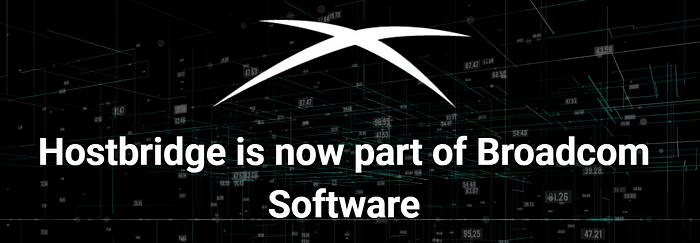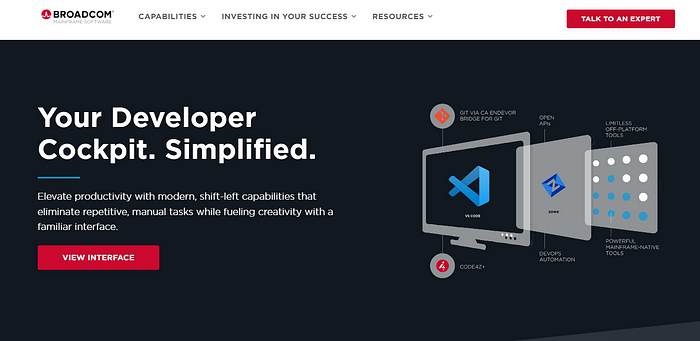Three ways to make mainframe applications, the proven engines of business, more adaptable to a changing, AI-infused world
For leaders running mission-critical mainframe applications, the lifeblood of their businesses, the platform’s unmatched reliability and security are essential.
Yet, as the pace of digital change accelerates and AI becomes a priority, mainframe is increasingly perceived as a platform with applications that are difficult to update/change. Let’s look at the root cause of this perception.
Cloud, by contrast, is synonymous with software delivery practices built for constant experimentation and change. Fail Fast is not only accepted, it’s encouraged. This structural ability to accommodate change is a legacy of the early experience-centric business models built in the cloud (think Netflix), ones that adjust to market feedback in real-time. Adaptability is the foundation upon which all else is built.
With the mainframe, attributes like reliability, security, sustainability and availability prevail above all else. These qualities, which have been fine-tuned over decades, serve as the foundation for mainframe software development. Failure is never an option.
Despite adopting agile methods and tools over time, the perception persists and, fair or not, it drives application owners to explore alternatives, including high-risk ones like migration.
The challenge will become even more problematic as AI gains wider acceptance among large enterprises. The IBM z16, introduced last year, includes an integrated on-chip AI accelerator delivering latency-optimized inferencing. This innovation is designed to enable real-time transaction analysis at scale.
Mainframe applications hold the keys to the kingdom — valuable data and business logic ripe for machine learning algorithms, intelligent experiences and real competitive advantage. Demands on mainframe AppDev teams in the coming years will dwarf those from the pandemic — a sustained trend that teams should prepare for now.
Risk-managed Modernization
Can mainframe teams achieve new levels of adaptability without compromising the core qualities that make the platform great? Absolutely! Modernizing-in-place means modernizing both the process by which changes are made (aka application development) and, of course, the applications themselves to meet changing functional and technical/architectural needs.
Risk-managed modernization from Broadcom focuses on three core pillars that can be adopted independently, or holistically for the biggest impact: 1) DevOps Automation, 2) Developer Experience (DevX) Optimization, and 3) API Enablement.
1. DevOps Automation
Mainframe AppDev teams benefit from the same shift-left automation that their cloud peers use to drive business agility. Not only does this accelerate the delivery process, but it also frees up developers to focus on higher-order activities like designing, architecting and what they do best: coding.
Many mainframe teams are already benefiting from CI/CD pipeline automation. In a recent study of mainframe leaders conducted by IDC and sponsored by Broadcom, the top benefit of DevOps for mainframe teams is “Increasing Mainframe Developer Productivity”. Code scanning is a great example, and a common entry-level use case, that opens the door to higher-order automation.

Zowe provides an open, community-based approach to DevOps adoption by offering a powerful CLI, SDKs and API Mediation Layer. With these tools along with Endevor Bridge for Git, developers tap into the same toolchains their colleagues use to reduce delivery friction (e.g., continuous integration, continuous testing).
A best practice is to facilitate developer access to infrastructure services (i.e., APIs) enabling them to automate their work. Using Zowe API ML, teams can create a mainframe internal developer platform (IDP) that brings the concept of Platform Engineering, a fast-growing AppDev discipline, to mainframe.
Mainframe teams also benefit from the internal lessons learned by their trailblazing peers — toolchain alternatives, compliance and audit requirements, etc.
To help evaluate the many DevOps Automation opportunities, a roadmap-building toolkit is available. An AppDev Modernization Roadmap is an invaluable asset that builds stakeholder engagement and demonstrates an organizational commitment to both developer productivity and career development — it becomes a rallying point for teams. The toolkit consists of 15 use cases that offer the greatest ROI in the short- to medium-term, enabling teams to balance strategic objectives with interim value delivery.
The Modernization Roadmap toolkit also covers the second modernization pillar, Developer Experience Optimization.
2. Developer Experience (DevX) Optimization
Simple, everyday tasks can slow down the development process, making it difficult to deliver value. Even minor changes can be challenging because monolithic applications are difficult to navigate, for new team members and veterans alike. Code reviews, simple in the cloud world, become a laborious process.
These challenges are magnified with the retirement brain drain leaving newer team members struggling with sometimes limited and/or outdated documentation.
However, developers absolutely LOVE Visual Studio Code and it helps solve the monolith challenge.
With it, they can jump anywhere in the code instantly and navigate complex applications easily using features like the Minimap. With it, understanding monolithic code and the implications of changes becomes manageable.
Code4z is a free and open extension pack that transforms VS Code into a mainframe developer cockpit, enabling developers to easily access, navigate, edit and debug mainframe applications.
A user commented, “Code4z is a game changer. With it, we easily navigate and understand apps with tens of thousands of modules, making code reviews a breeze.”
The value of DevX Optimization goes beyond adaptability — offering tools like VS Code and Git attracts the best and brightest talent. In fact, contemporary tooling is becoming table stakes in a highly competitive talent marketplace.
To help demystify the VS Code experience, the Developer Cockpit Simulator provides a COBOL/Db2 developer’s view.
[Visit Developer Cockpit Simulator]
Early innings but we’re also facing an impending revolution in AI-assisted application development. Adopting modern tools like VS Code will pay even greater dividends as they become springboards to new ways of developing software including options like ChatGPT and GitHub Copilot. Those limited to ISPF and older IDEs like Eclipse will quickly become marginalized.
DevX is critical to application vitality.
3. API Enablement
Perhaps the most obvious way to address a continuous stream of business requirements is to API-enable mainframe applications (the third pillar).
The risk-managed approach to API enablement does not require any application changes. HostBridge, recently acquired by Broadcom, enables teams to rapidly develop & deploy reusable CICS APIs (JavaScript/JSON-based) without disruption. Consumers of these APIs can range from other business apps (e.g., front-ends), to bots, to 3rd party apps.

No application changes, no screen scraping, no security changes. And they’re low chatter (i.e., highly efficient) which, otherwise, can drive up networking and operating costs and degrade response times.
In fact, a key resistance to API enablement and, by association, mainframe modernization, is the operating cost of existing APIs. For business application APIs that were created with other tools, inefficiency can drive MIPS costs sky-high and therefore create bias against in-place modernization (i.e., trigger migration discussions). To tackle this problem, HostBridge HTAC reports end-to-end API consumption by correlating transactions with their points of origin on mobile & other distributed apps and can reduce inefficiencies in existing CICS application integrations by up to 95%. Understanding the performance of existing APIs can eliminate a roadblock to a wider API enablement program.
Next Steps
The 3 methods described in this article — DevOps Automation, DevX Optimization and API Enablement — provide a high-level modernization blueprint to facilitate an ‘adaptability journey’. Roadmaps that balance strategic objectives with interim value delivery energize teams around the future state vision, which is often aligned with contemporary hybrid cloud development. Closer alignment with prevailing hybrid cloud practices improves adaptability while facilitating the recruitment and onboarding of the next generation of mainframe developers.
Let’s embrace all that mainframe is known for — reliability, security, sustainability and availability — and add one more ‘ility’ to the mix: adaptability. For internal Product Owners and the customers they serve, let’s make mainframe a platform of YES!
Speak with an expert Modernization Advisor today.
Read more on the Modern Mainframe blogsite.
Originally Published on Medium.



